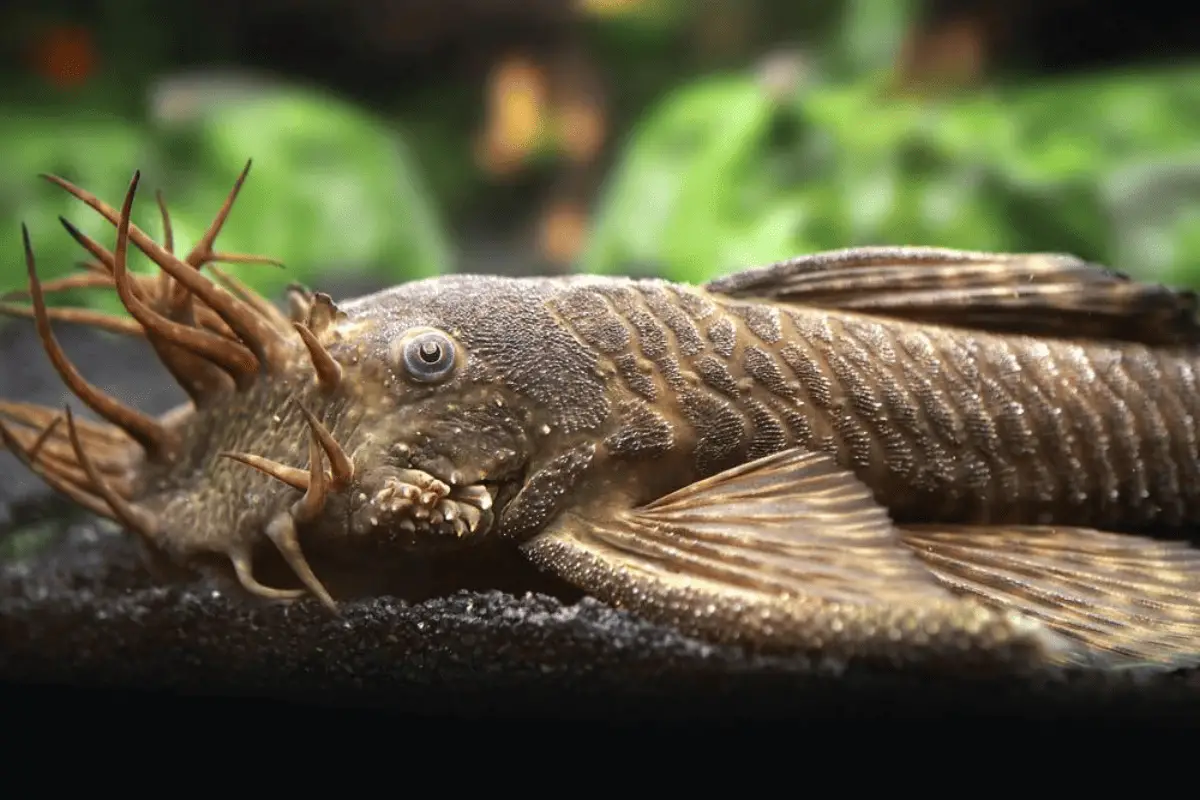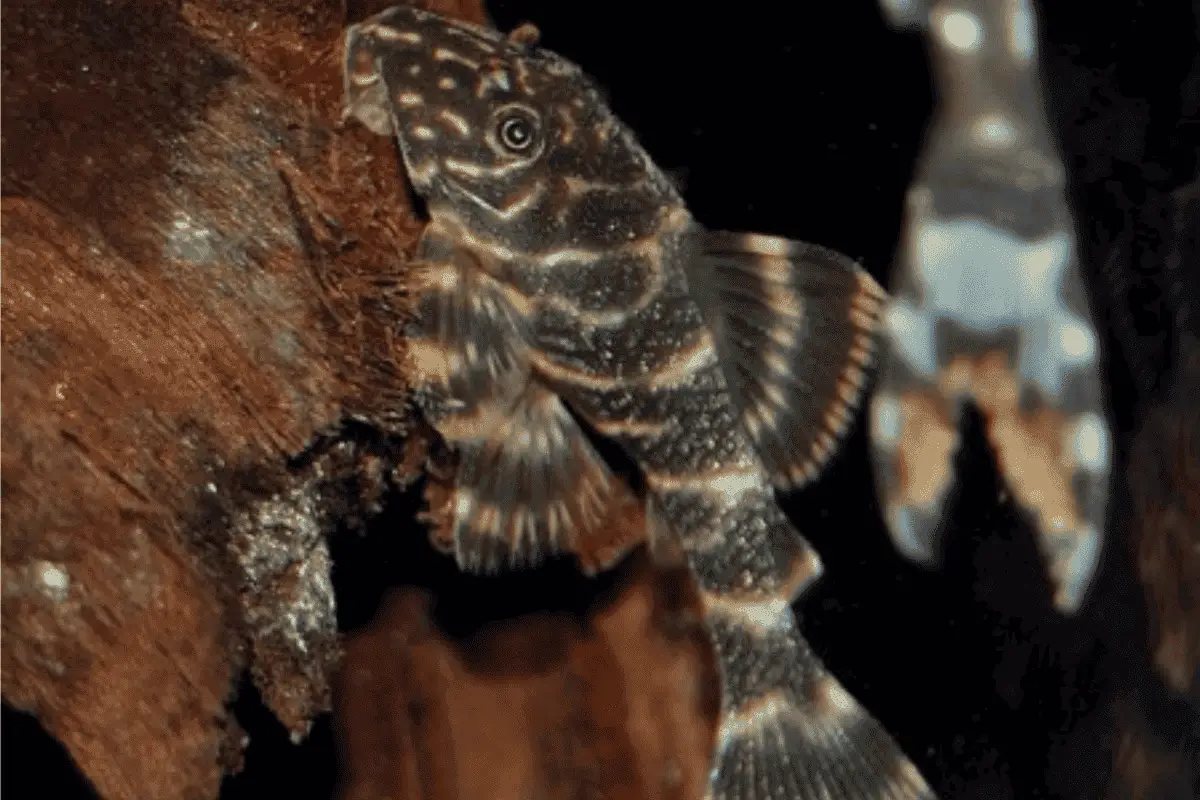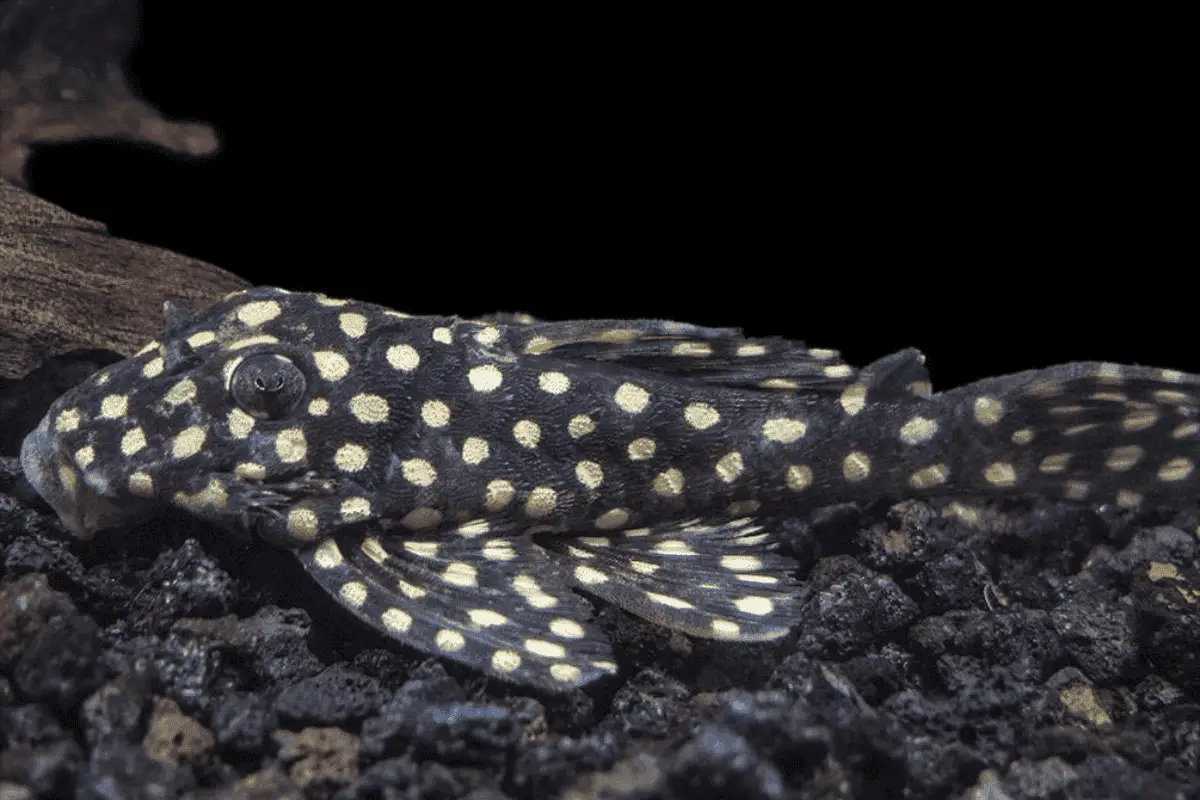Many fish owners love having Plecos in their aquariums because they’re calm and great at cleaning the tank.
But what if you have a fish tank of 40 gallons? Which Plecos can you keep in it? Can you keep more than one? And how do you care for them in that tank size?
In this article, I’ll address all these questions and many more, so you leave with all the information you need. Let’s get started.
Which Plecos Can Live in a 40-Gallon Tank?
In a 40-gallon tank, you can comfortably house smaller species of Plecos, as the larger ones require expansive spaces to thrive.
It’s crucial to consider their adult size, behaviors, and environmental needs when choosing the right Pleco for such a tank.
- Adult Size: Some Plecos grow up to 2 feet, but in a 40-gallon, only those reaching a max of 4-6 inches should be considered.
- Environmental Needs: Plecos need hiding spots like caves or driftwood; smaller tanks can accommodate only limited decor, so select species with modest requirements.
- Dietary Requirements: While most Plecos are algae-eaters, some need a varied diet including veggies and specialized pellets. Ensure the tank’s size won’t hinder feeding different species.
- Behavioral Traits: Some Plecos are territorial; a 40-gallon might only support one individual or require careful species pairing to prevent aggression.
- Maintenance and Water Parameters: Plecos can produce a significant amount of waste. In limited water volume like 40-gallons, consistent water changes and efficient filtration are vital.
Considering these aspects, here are 15 Pleco species that can comfortably accommodate a 40-gallon tank:
1. Bristlenose Pleco (Ancistrus spp.)

These fish, reaching 4-6 inches, are beloved for their tentacle-like bristles. Native to South America, they are excellent algae cleaners.
Supplement their diet with algae wafers and fresh vegetables.
2. Clown Pleco (Panaqolus maccus)

At a manageable 3-4 inches, they sport a unique pattern reminiscent of clown makeup.
Originating from Venezuela, they have a penchant for driftwood, both as a dietary need and hiding place.
3. Rubber Lip Pleco (Chaetostoma formosae)

They mature to about 7 inches and are distinct due to their fleshy lips.
Hailing from fast-moving streams in the Andes, they enjoy strong currents and benefit from algae-rich diets with veggie supplements.
4. Zebra Pleco (Hypancistrus zebra)

An exquisite species growing to 3-4 inches, they are adorned with black and white stripes. Native to Brazil’s Xingu River, they thrive on a diet of high-quality pellets and frozen foods.
5. Candy Stripe Pleco (Peckoltia vittata)

These 4-inch beauties get their name from candy-like stripes. Found in Brazil’s clear waters, their diet should oscillate between meaty foods and vegetables.
6. Spotted Pleco (Pterygoplichthys pardalis)

These creatures, achieving about 7 inches, are characterized by a spotty appearance.
Indigenous to South American rivers, they appreciate a mix of algae wafers, veggies, and occasional protein-rich foods.
7. Dwarf Pleco (Panaqolus albivermis)

Attaining sizes of 3-4 inches, they’re ideal for modest tanks. Native to the Rio Orinoco basin, they have a fondness for driftwood and consume both plant matter and meaty foods.
8. Queen Arabesque Pleco (Hypancistrus debilittera)

A highly desired 3.5-inch species, they exhibit sophisticated patterns.
They hail from Venezuela’s tumultuous waters and have carnivorous inclinations, preferring a protein-dense diet.
9. Butterfly Pleco (Dekeyseria pulchra)

Growing to 6 inches, they boast a unique flattened body. Indigenous to the Amazon basin, they flourish on an assorted diet of algae, veggies, and high-quality pellets.
10. Gold Nugget Pleco (Baryancistrus xanthellus)

Maturing between 6-8 inches, their gold spots are a striking feature. From Brazil’s Rio Xingu, it’s crucial to feed them a balanced blend of veggies, algae, and meaty foods.
11. Peppermint Pleco (Leporacanthicus galaxies)

This 7-inch species is known for its dark body adorned with bright white or light blue spots, resembling a starry galaxy.
Originating from the Rio Orinoco and Rio Tapajós basins, they have carnivorous tendencies and thrive on a diet rich in meaty foods and high-quality pellets.
12. Medusa Pleco (Ancistrus ranunculus)

Growing to about 5 inches, they are distinguished by their long, flowing tentacles.
Found in the tributaries of Brazil’s Rio Tapajós, they prefer softer substrates and a diet packed with green vegetables and algae wafers.
13. Blue-Eyed Pleco (Panaque cochliodon)

A rarer Pleco, growing up to 7 inches, they have striking blue eyes that make them stand out.
Native to the Rio Magdalena and Rio Cauca basins in Colombia, they feed primarily on wood, so driftwood is essential in their diet and environment.
14. King Tiger Pleco (Hypancistrus spp.)

This species, growing to about 5.5 inches, features bold black and white stripes.
They hail from the Rio Xingu in Brazil and require hiding spots due to their shy nature. Feed them with a mix of meaty foods and high-quality pellets.
15. Snowball Pleco (Hypancistrus inspector)

Achieving sizes of 5-6 inches, they possess a dark body dotted with bright white spots.
Found in Venezuela’s Rio Orinoco and Rio Negro, they’re carnivorous and do best with a diet of protein-rich foods and occasional vegetables.
How Many Plecos Can You Put in a 40-Gallon Tank?
In a 40-gallon tank, you can comfortably accommodate one to two small-to-medium-sized Plecos, but the exact number depends on their species and growth potential.
If you opt for smaller species, two might be fine, but with medium-sized Plecos, it’s best to stick to just one.
- Size Matters: As a rule of thumb, one Pleco per 20 gallons for species that grow up to 5 inches is a good guideline, ensuring adequate space for full-grown fish.
- Territorial Behavior: Plecos can be territorial, especially in confined spaces. Two Plecos in a 40-gallon might lead to disputes if not provided with enough hiding spots.
- Bioload Impact: Plecos generate a lot of waste. If you have more than one Pleco, you’ll need better filtration and regular water changes to keep the water clean.
- Environmental Enrichment: Plecos love their hiding places and personal territories. An overcrowded tank can stress them out, affecting their health.
- Dietary Considerations: If you have two Plecos, they might fight over food. When keeping multiple Plecos, make sure each one gets enough nutrition but avoid overfeeding as it can compromise water quality.

What’s the Ideal Tank Size for Plecos?
The perfect tank size for Plecos depends largely on their species. While some are content in a 20-gallon tank, others might need upwards of 150 gallons.
Always do your homework on the specific Pleco type you’re eyeing because their sizes and needs vary quite a bit.
- Species Variation: With over 150 different species, Plecos have a wide range of needs. For instance, a Dwarf Pleco can be happy in a 20-gallon space, but the Common Pleco, growing over 24 inches, requires much more room.
- Growth Consideration: Think about how big your Pleco will get as it grows. A young Pleco might fit in a smaller tank, but it’ll need more space as it gets older, or it might face health issues.
- Activity Level: While Plecos are not the most active swimmers, they do appreciate space to roam, explore, and find food. More space usually leads to a healthier, happier Pleco.

Here’s a table of 20 Pleco species, ordered from the smallest to the largest recommended tank size:
| Pleco Species Recommended | Tank Size |
| Dwarf Pleco | 20 |
| Clown Pleco | 20 |
| Bristlenose Pleco | 30 |
| Peppermint Pleco | 30 |
| Medusa Pleco | 30 |
| Candy Stripe Pleco | 40 |
| Rubber Lip Pleco | 40 |
| Zebra Pleco | 40 |
| Blue-Eyed Pleco | 50 |
| Spotted Pleco | 55 |
| Snowball Pleco | 55 |
| King Tiger Pleco | 55 |
| Butterfly Pleco | 60 |
| Queen Arabesque Pleco | 60 |
| Gold Nugget Pleco | 70 |
| Royal Pleco | 90 |
| Sailfin Pleco | 125 |
| Common Pleco | 150 |
| Gibbiceps Pleco | 150 |
| Rhino Pleco | 150 |
Also Read: Pleco Fish Tank Size
How Big Will a Pleco Get in a 40-Gallon Tank?
A Pleco’s growth in a 40-gallon tank depends on its species, but many will reach their natural size regardless of tank constraints.
However, keeping a Pleco in an undersized tank might stunt its growth, leading to health issues or a shortened lifespan.
- Genetics Play a Role: Most Plecos will attempt to reach their genetic potential in size, whether in a vast river or a confined tank. A Bristlenose, for example, will generally grow to 4-6 inches, regardless of the tank.
- Stunting Concerns: Plecos in too small a space may experience stunted growth, a condition where their outside stops growing but internal organs do not, leading to health problems.
- Behavioral Indications: An undersized tank can make Plecos more aggressive or stressed due to the lack of space. This stress can also impact their growth and overall well-being.
- Dietary Impact: In smaller tanks, there’s a risk of overfeeding, leading to obesity in Plecos, which is different from healthy growth.
- Environmental Factors: Clean water, appropriate filtration, and a balanced diet can support healthy Pleco growth, even in constrained spaces. But these conditions become harder to maintain in undersized tanks.

Can Plecos Breed in a 40-Gallon Tank?
Absolutely, some Pleco species can comfortably breed in a 40-gallon tank, particularly smaller ones like the Bristlenose Pleco.
Yet, for successful breeding, it’s vital to maintain certain conditions and closely monitor the tank’s environment.
- Space Requirements: Although several Plecos can reproduce in a 40-gallon setup, they need space for nesting, claiming territory, and the growth of their young ones. Too many fish in one tank can disrupt the breeding process.
- Environmental Considerations: To breed, Plecos require conditions like clean water, consistent temperatures, and the right pH balance. Elements like driftwood or cave-like formations are crucial for their breeding sites.
- Species Matters: It’s essential to note that not every Pleco type is fit for a 40-gallon tank breeding. While a Bristlenose might do well, bigger species would need more room to successfully breed.
Also Read: Plecos In A 30-Gallon Tank
What Is the Largest Pleco You Can Get for a 40-Gallon Tank?
For a 40-gallon setup, you’d be best sticking to a Pleco that grows up to about 6-7 inches in adulthood, like the Peppermint Pleco.
Keeping a more massive Pleco in such a tank can result in a range of issues, both for the fish’s health and water quality.
- Space Constraints: Remember, Plecos aren’t just about length. They’re bulky and can be territorial, so they need ample space. A 6-inch Pleco still needs a good amount of room to swim, eat, and hide with ease.
- Health Implications: Housing a bigger Pleco in limited space can cause stress, hindered growth, and a shorter life. It’s crucial to ensure enough space for the health and happiness of any fish.
- Tank Maintenance: Larger Plecos produce more waste, which can strain filtration systems and reduce water quality. A 40-gallon tank can quickly become polluted with an oversized resident.
- Behavioral Considerations: Plecos can become more aggressive when cramped. This behavior can endanger other tank inhabitants and the Pleco itself.

Tips for Keeping Plecos in a 40-Gallon Tank
Keeping Plecos in a 40-gallon tank requires careful consideration of their species, environment, and diet.
With the right care and attention, a 40-gallon tank can be a comfortable home for certain Pleco species.
- Species Selection: Stick to smaller species like the Bristlenose or Clown Pleco. For example, while a Bristlenose averages 4-6 inches, a Common Pleco can grow beyond 12 inches, making the former a better fit.
- Water Quality: Invest in a good-quality filter, preferably rated for larger tanks (e.g., 50-60 gallons) as Plecos produce substantial waste. Test water parameters weekly, aiming for ammonia levels close to 0 ppm.
- Hideouts and Decor: Incorporate driftwood, caves, or PVC pipes. Plecos, especially nocturnal species, appreciate multiple hiding spots; aim for at least 2-3 distinct hideaways. I picked the Jabukosu 2 PCS Aquarium Cave (link to Amazon).
- Balanced Diet: Offer varied foods like sinking pellets, blanched veggies (e.g., zucchini or cucumber slices), and occasional treats like bloodworms. Feed them 2-3 times a week, adjusting based on their consumption.
- Tank Mates: Consider peaceful, mid-to-upper dwelling fish. In a 40-gallon setup, 10-12 smaller tetras or rasboras can be a good choice to cohabit with a Pleco.
- Regular Maintenance: Perform 20-25% water changes every two weeks. Given the bioload of Plecos, maintaining water quality is paramount.
- Monitor Growth: Keep a monthly check on your Pleco’s size. If it starts nearing its maximum size for the tank (around 6 inches for a 40-gallon), consider relocating or upgrading.
Also Read: Which Plecos Can Live In A 55-Gallon Tank?

Conclusions
For those of you in a rush, here’s a brief overview:
- Plecos in a 40-gallon tank should be chosen based on their adult size, with species reaching 4-6 inches being the most suitable.
- Careful consideration of a Pleco’s dietary requirements is crucial to maintain their health in a limited tank space.
- Some Pleco species can be territorial, so selecting the right species or managing their interactions is important in a 40-gallon tank.
- Adequate maintenance, including regular water changes and efficient filtration, is essential due to Plecos’ high waste production in smaller tanks.
- The recommended tank size for Plecos varies greatly depending on the species, with some needing as small as a 20-gallon tank and others requiring 150 gallons or more for optimal well-being.
